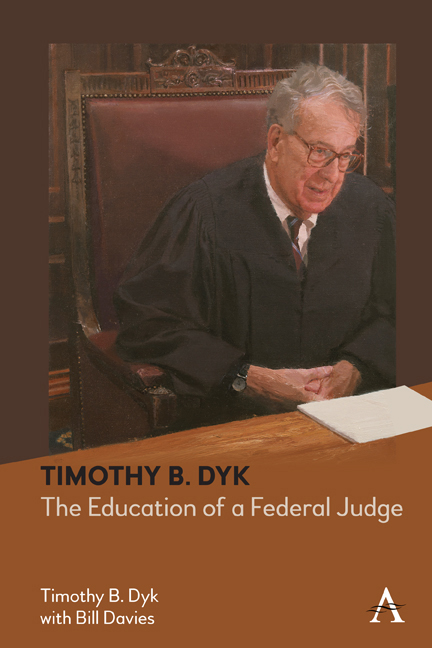Book contents
- Frontmatter
- Dedtication
- Contents
- Foreword
- Acknowledgments
- 1 Introduction
- 2 Family History
- 3 Early Life and Schooling, 1937–61
- 4 Clerking at the Supreme Court, 1961–63
- 5 The Tax Division, 1963–64
- 6 Wilmer Cutler, 1964–90
- 7 Jones Day, 1990–2000
- 8 Reflections on Changes in the Legal Profession
- 9 Becoming a Federal Judge, 1993–2000
- 10 The Confirmation Process, 1998–2000: Selected Diary Entries
- 11 Life as a Federal Judge, 2000–the Present
- 12 Epilogue
- Appendix
- Index
8 - Reflections on Changes in the Legal Profession
Published online by Cambridge University Press: 15 September 2022
- Frontmatter
- Dedtication
- Contents
- Foreword
- Acknowledgments
- 1 Introduction
- 2 Family History
- 3 Early Life and Schooling, 1937–61
- 4 Clerking at the Supreme Court, 1961–63
- 5 The Tax Division, 1963–64
- 6 Wilmer Cutler, 1964–90
- 7 Jones Day, 1990–2000
- 8 Reflections on Changes in the Legal Profession
- 9 Becoming a Federal Judge, 1993–2000
- 10 The Confirmation Process, 1998–2000: Selected Diary Entries
- 11 Life as a Federal Judge, 2000–the Present
- 12 Epilogue
- Appendix
- Index
Summary
The history of the Cravath firm covers the period from the inception of the predecessor firms in the nineteenth century to the period after World War II. Most of the book is a boring listing of railroad reorganizations and other firm representations, but there are other parts that describe the way the practice used to be, and they are fascinating. That led me to attempt to describe the changes that occurred from the time that I started in practice to the time I went on the bench and to some extent thereafter.
Many of the changes in the legal profession in the past 50– 60 years are readily apparent and were summarized in Chapter . My goal here is to describe some aspects of those changes and other changes not so well known. The focus is on changes in what is fondly known as “Big Law” in Washington, the venue of my 35 years in private practice. The major changes can be easily summarized: Over the past 60 years, what used to be a profession has morphed into big business with all the attendant problems.
Size of the Legal Profession
There are now many, many more law schools and many, many more law school graduates than there were when I entered the profession. This has produced a great surplus of lawyers (though not a surplus of lawyers representing individuals, particularly the disadvantaged). Only a small percentage of recent graduates is hired by one of the leading firms. Many law school graduates do not end up practicing law at all. Interestingly, the same problem—a surplus of lawyers—has existed in vastly different contexts in nineteenth-century Europe and in China today. As a result of the lawyer surplus, there is a tremendous amount of anxiety at many US law schools about getting a job after graduation. That was not a problem when I was in law school. Even if you were toward the bottom of the class in a good law school, it was pretty much certain that you would have a job when you graduated, if you wanted one.
Composition of the Legal Profession
When I went to law school in 1958, there were very few women in the class. Harvard had only opened its law school to women in 1950.
- Type
- Chapter
- Information
- Timothy B. DykThe Education of a Federal Judge, pp. 135 - 156Publisher: Anthem PressPrint publication year: 2022

